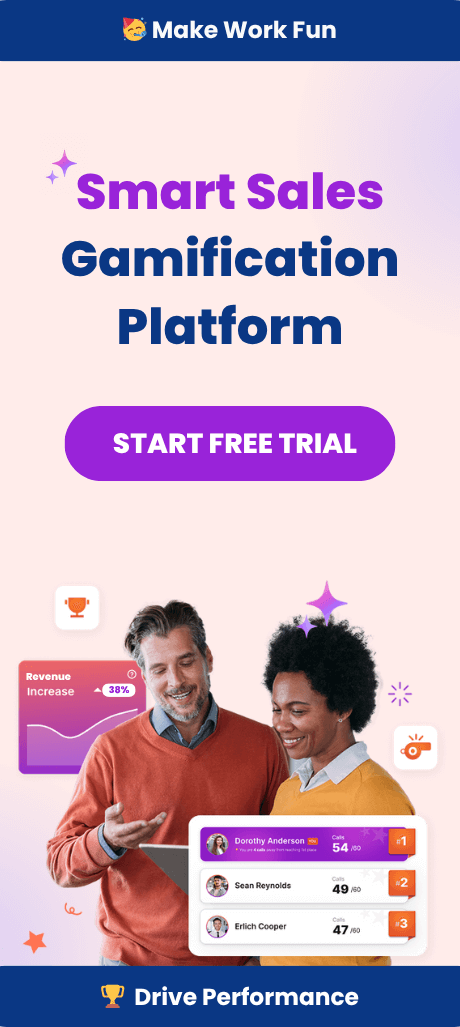Digital Leaderboards: The Engagement Advantage
Understanding the Engagement Imperative
Employee engagement has evolved into a central metric for organizational performance. Executives and RevOps leaders grapple with the challenge not just of measuring engagement, but of sustaining it in a hybrid and ever-evolving workplace. Traditionally, companies invested heavily in recognition programs and incentives. Yet as the pace of business accelerates and expectations for transparency grow, static recognition boards and quarterly performance updates feel increasingly outmoded. What is emerging in their place is an ecosystem of real-time, digital engagement tools, led by the rise of digital leaderboards. These platforms do more than record numbers, they reshape culture by inspiring ongoing commitment, transparency, and a spirit of friendly competition that directly supports company goals.
The Digital Leaderboard Difference
At the most basic level, a digital leaderboard tracks individual and team performance against predetermined metrics. But its real value lies in context and visibility. Rather than confining achievement to a monthly meeting or private report, leaderboards transform recognition into a public, dynamic, and social experience. Every time an employee closes a sale, completes a training milestone, or provides exceptional service, that data is reflected instantly. For organizations using a customizable leaderboard, this level of transparency fosters immediate motivation and peer-driven accountability in ways that 1:1 manager feedback rarely achieves alone.
Psychology Behind the Leaderboard
Humans are intrinsically driven to compare and benchmark their performance. Digital leaderboards turn this universal trait into a strategic asset by visualizing success and progress for everyone. Not only do leaderboards highlight the top performers, they empower managers to recognize improvement at all levels. This is especially impactful when combined with thoughtful incentive design. For example, organizations that prioritize progress—for instance, highlighting employees who have improved most in a given period—find that engagement is more sustainable and morale is less likely to flag among those not consistently at the top.
- Creates real-time feedback loops by displaying results instantly, helping employees understand the impact of their daily actions
- Fuel aspiration and positive competition when goals are visible and attainable, nurturing both personal and collective ambition
- Encourage behavioral change by linking leaderboard status with tangible rewards such as recognition, perks, or bonuses
Evolving Beyond Traditional Recognition
Recognition has long been recognized as a catalyst for performance, but digital leaderboards elevate it to new heights. Instead of reserved, manager-driven feedback, recognition becomes democratized, with every team member able to see and celebrate each other’s progress. Integration with broader employee recognition initiatives multiplies the impact, driving a cycle where recognition and performance reinforcement are seamlessly interconnected. The real-time, public nature of digital leaderboards ensures that recognition is timely and deeply felt.
The Critical ROI of Engagement
From a business perspective, employee engagement directly affects productivity, talent retention, and ultimately, customer satisfaction. Digital leaderboards allow executives to visualize engagement trends over time and correlate them with business outcomes. High-frequency recognition, whether tied to individual achievements or team milestones, translates into measurable increases in output and innovation. When paired with robust measurement strategies, leaderboards become a feedback mechanism that signals what is working and where interventions may be warranted.
- Reduced turnover rates, a key benefit connected to both recognition and transparent rewards systems
- Greater discretionary effort, as employees perceive themselves part of a high-performing, winning culture
- Improved knowledge sharing, as public celebration of expertise encourages collaboration rather than secrecy
Key Drivers: Gamification and Digital Leaderboards
Gamification—defined as applying game mechanics in non-game contexts—finds its purest expression in digital leaderboards. The logic is simple: when goals are clear, feedback is immediate, and rewards are visible, people are more likely to act on their intrinsic and extrinsic motivations. For sales teams in particular, digital leaderboards designed with principles of gamification for employee engagement turbocharge both competition and camaraderie. When thoughtfully integrated, gamification tools deliver:
- Enhanced motivation, as employees strive to appear on (or climb) the leaderboard
- Rapid feedback cycles, turning abstract KPIs into tangible daily targets
- Scalable recognition, fostering group participation instead of isolating success to a few top performers
Technological Advancements Shaping the Future
The modern digital leaderboard is more than a digital whiteboard. Today’s leading platforms incorporate rich analytics, custom notifications, integrations with CRMs, and even AI-driven insights that highlight not only performance but behavior patterns. These innovations are helping organizations move from static, rear-view reporting to predictive and prescriptive action. Tagging, predictive analytics, and trend visualization transform the leaderboard into a coaching tool, not just a scoreboard. For those seeking the best gamification platform, such capabilities deliver a competitive edge both in performance and in insights.
Implementing a Digital Leaderboard Strategy
Successfully adopting digital leaderboards requires more than purchasing software. Leaders must identify the right KPIs, align the leaderboard to business outcomes, and design reward structures that encourage both competition and collaboration. Cultural buy-in is equally vital: introducing leaderboards should come with a focus on inclusivity and growth, not just naming winners and losers. Continuous feedback from employees will reveal which elements resonate and where friction exists, enabling ongoing refinement.
Steps for Effective Implementation Include:
- Define clear, relevant performance metrics aligned with organizational goals
- Ensure metrics are attainable, transparent, and easily understood by all participants
- Integrate across major workplace platforms for frictionless updates and access
- Communicate the why behind the leaderboard to foster buy-in
- Revisit and iterate criteria based on data and employee feedback
Common Pitfalls and Solutions
While digital leaderboards have transformative potential, implementation missteps can undermine results. One frequent issue is overemphasis on a single metric such as raw sales volume, neglecting quality, customer experience, or support behaviors. This can create counterproductive competition or demotivate those consistently at the lower end of the rankings. Leaders can counteract this by designing multi-dimensional leaderboards, including metrics for collaboration and professional growth. Platforms with robust customization options provide flexibility to ensure the leaderboard evolves alongside organizational priorities.
The Role of Customization and Personalization
Today’s most effective digital leaderboards are not one-size-fits-all. Customizability is increasingly demanded by high-performance teams seeking to balance friendly competition with individual development. Personalized shout-outs, tailored recognition badges, and nuanced performance summaries let employees celebrate what makes them uniquely effective, not just how they measure up overall. For sales organizations, customized leaderboards—such as those offered by Spinify—have proven to be particularly effective in aligning motivation with diverse, dynamic goals. Learn how teams are leveraging customization by booking a demo.
The Manager’s Perspective: Using Leaderboards for Coaching
Managers and enablement leaders benefit from leaderboards as both diagnostic and engagement tools. Public tracking highlights not only who is excelling, but who may need targeted support. When leaderboards are integrated with coaching tools and analytics, managers gain actionable insights into habit formation, pacing, and peer-led collaboration. Rather than fostering a zero-sum mentality, the right leaderboard fosters a climate where everyone can improve and contribute.
Future Trends: AI and Predictive Analytics
Looking ahead, integration with AI-powered insights stands to further revolutionize digital leaderboards. AI can surface hidden drivers of engagement, such as peer recognition trends or common traits among top improvers. Predictive analytics can anticipate which team members are at risk of disengagement or burn out, empowering managers to intervene proactively. More organizations are selecting gamification solutions that deliver both real-time visibility and forward-looking intelligence in a single unified interface.
Linking Leaderboards to Broader Engagement Programs
To maximize their potential, digital leaderboards should not exist in a vacuum. Best-in-class organizations weave them into comprehensive engagement strategies, integrating with rewards platforms, recognition programs, and even professional development initiatives. This integrated strategy amplifies the effects of digital competition and recognition, creating a virtuous cycle of performance and satisfaction. Learn more about integrating engagement tools in our article on engagement platforms.
Executive Takeaways and Next Steps
For today’s executive—and especially those leading sales or enablement teams—digital leaderboards offer a practical and scalable lever for driving engagement and performance. By understanding the psychology of recognition, leveraging gamification mechanics, and adopting a data-driven approach to customization, organizations foster a culture where everyone has the clarity and incentive to give their best. The technology has matured, and its integration can be seamless when paired with thoughtful planning and open communication. Digital leaderboards are not a quick fix or a panacea, but, when strategically designed, they represent one of the most robust investments you can make in your people and in your results. If you are ready to explore your options, check out a demo of today’s most advanced leaderboard solutions.



